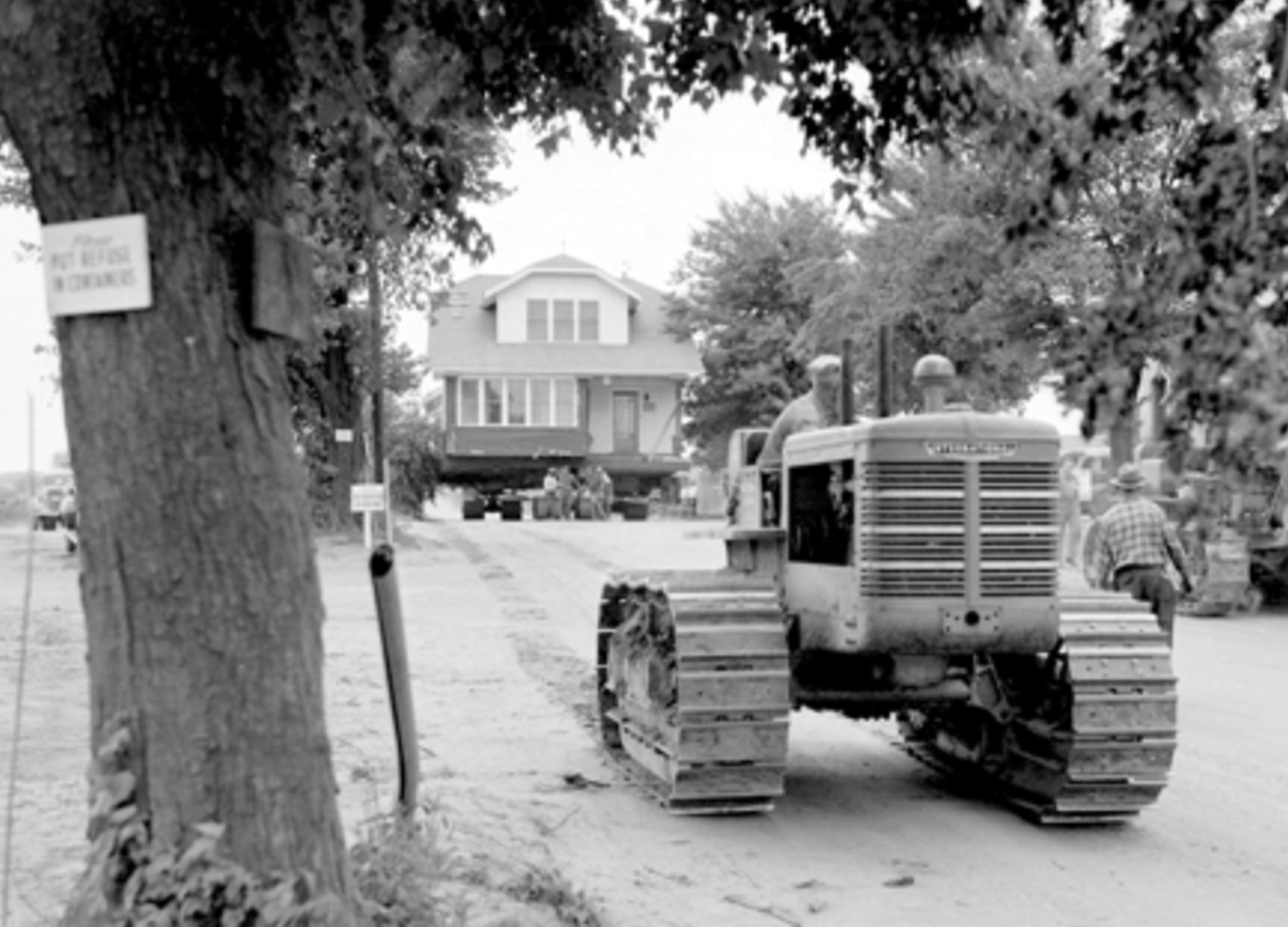
Crews remove a farm house from the Plum Brook Ordnance Works …
The site near Sandusky, Ohio on which National Air and Space Administration Glenn Research Center’s Plum Brook Station is located was known at the Plum Brook Ordnance Works in 1940s and 1950s. In the fall of 1940 the US government decided to build 77 ordnance manufacturing sites across the Midwest to prepare for World War II. Roughly 9,000 acres of farmland near Sandusky were selected for one site. Local farmers were given just months to relocate their families and equipment and obtain another farm or a new profession. Some houses were physically moved from the land, as seen in this photograph, and some were left to be demolished. In less than a year the property became a fenced-in industrial complex with over 600 buildings and thousands of employees. The ordnance works produced trinitrotoluene (TNT), dinitrotoluene (DNT), and pentolite. The powder was crated and shipped to an arsenal in Ravenna, Ohio where the explosives were packed into shells and sent to Allied forces overseas. Plum Brook also had scores of Quonset hut-like concrete bunkers placed in rows under sod and vegetation. The ordnance works was shut down immediately after the war and remained vacant for the ten years. In 1955 NASA’s predecessor, the National Advisory Committee for Aeronautics, was looking for a site to build a nuclear test reactor in order to study effects of radiation on engine materials. A portion of the vacant Plum Brook site was selected and construction commenced the following year. By 1963, the agency had acquired the entire 9,000 acres from the Army. Plum Brook Station contained over 30 test facilities at its peak in the late 1960s. Today there are four major facilities in operation.
- X



























